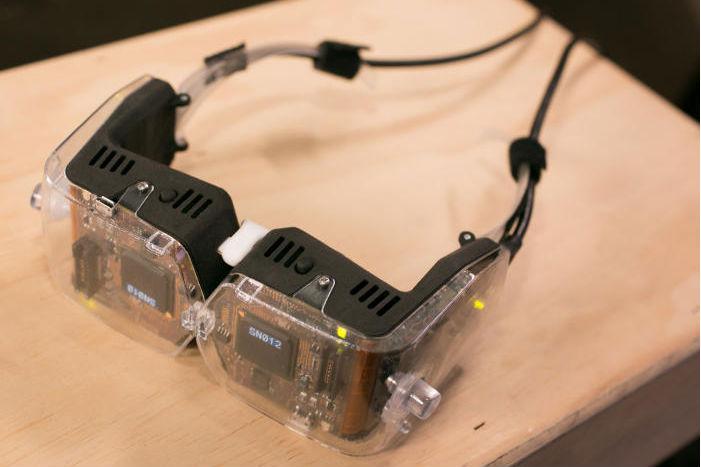
Head-mounted personal displays like Oculus Rift and Google Glass are pretty revolutionary devices. Years from now they’ll likely be remembered for bringing virtual/augmented reality into the mainstream, but, thanks to the breakneck pace of technological advancement, there’s already a new set of goggles in the works that make them look primitive by comparison.
In an exclusive interview yesterday with CNET, a small company called Avegant unveiled a prototype wearable display that’s unlike any other head-mounted device you’ve ever laid eyes on. Rather than relying on a set of high-resolution LCD displays placed close to your eyes (like Oculus Rift and its predecessors), Avegant’s technology cuts out the middleman. The Virtual Retinal Display they’ve developed has no screen – it actually projects images directly onto your retinas, which gives it a number of advantages over LCD-based headsets.

This also makes the device extremely comfortable to wear. Not in terms of how it feels on your head, but rather how it feels on your eyes. Projecting an image directly into your eyeballs requires extremely precise alignment and focusing (which was surely a massive engineering challenge for Avegant), but once everything’s calibrated and adjusted properly, your eyes no longer have to focus for themselves – the gadget does it all for you. According to Avegant CEO Ed Tang, this effectively mitigates the problem of eye strain, and makes the device easier to wear for extended periods of time.
At this point in time the Virtual Retinal Display is still just a prototype, but Avegant is moving quickly to finalize the design. The first working model was apparently built back in July of this year, and the version pictured above came together in September. If the company can keep up this feverish development pace, it may very well have the product ready for CES. So be sure to circle back for more details in January.
Image credit: CNET



